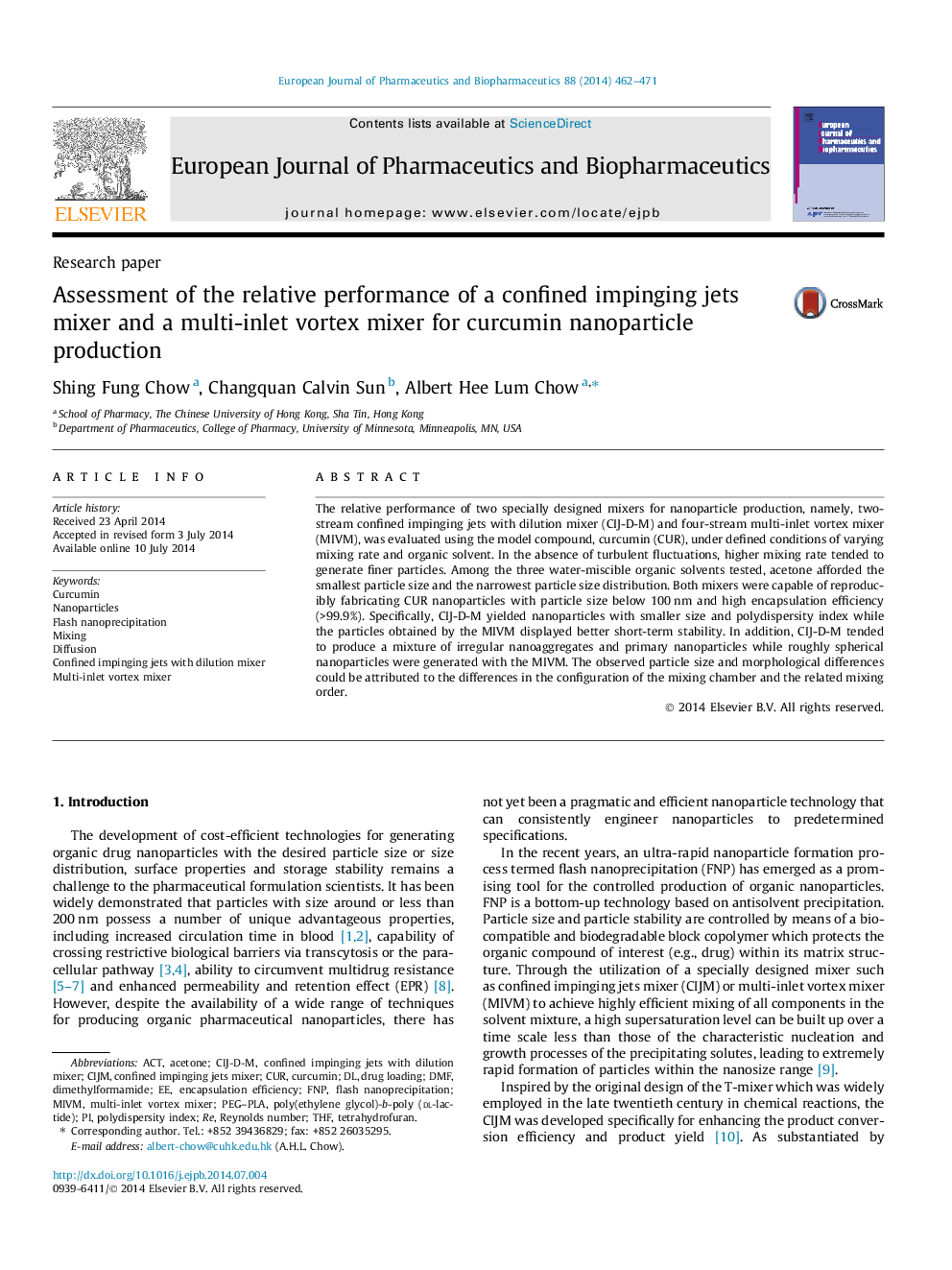| Article ID | Journal | Published Year | Pages | File Type |
|---|---|---|---|---|
| 2083828 | European Journal of Pharmaceutics and Biopharmaceutics | 2014 | 10 Pages |
•An impinging jets mixer and a vortex mixer for nanoparticle production were assessed.•Both mixers are capable of reproducibly fabricating curcumin nanoparticles.•Solvent and flow rate are critical parameters affecting the mixing outcomes.•Solvent with higher diffusivity can reduce the occurrence of turbulent fluctuations.•The mixer design and mixing order govern the particle size and particle morphology.
The relative performance of two specially designed mixers for nanoparticle production, namely, two-stream confined impinging jets with dilution mixer (CIJ-D-M) and four-stream multi-inlet vortex mixer (MIVM), was evaluated using the model compound, curcumin (CUR), under defined conditions of varying mixing rate and organic solvent. In the absence of turbulent fluctuations, higher mixing rate tended to generate finer particles. Among the three water-miscible organic solvents tested, acetone afforded the smallest particle size and the narrowest particle size distribution. Both mixers were capable of reproducibly fabricating CUR nanoparticles with particle size below 100 nm and high encapsulation efficiency (>99.9%). Specifically, CIJ-D-M yielded nanoparticles with smaller size and polydispersity index while the particles obtained by the MIVM displayed better short-term stability. In addition, CIJ-D-M tended to produce a mixture of irregular nanoaggregates and primary nanoparticles while roughly spherical nanoparticles were generated with the MIVM. The observed particle size and morphological differences could be attributed to the differences in the configuration of the mixing chamber and the related mixing order.
Graphical abstractFigure optionsDownload full-size imageDownload high-quality image (101 K)Download as PowerPoint slide
